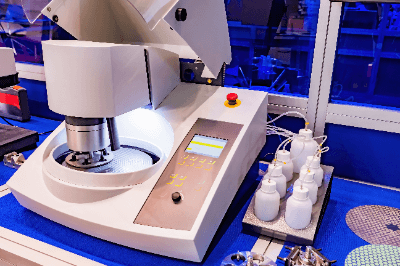What Is an Automatic Titrator?

Automatic Titrator is a device that automatically performs high-precision flat surface processing such as lapping and polishing.
The basic principle of Automatic Titrator is that a buffing board containing a grinding wheel or polishing fluid containing abrasive grains is rotated at high speed and pressed against the part to be sharpened while it rotates. As with grinding, there are lathes that press a blade against a part being rotated at high speed to sharpen it, but because the grinder rotates the grinding wheel, it can sharpen the part a little more gradually than a lathe, which uses a blade to sharpen the part.
In recent years, industrial products have been NC-compatible, and polishing machines can now automatically polish with computer-controlled “NC polishing machines.
Applications of Automatic Titrators
Automatic Titrators can be divided into two main categories depending on their intended use.
1. Processing of Industrial Products
Automatic Titrators are used for machining machine parts, for example, when a flat surface is required for smooth sliding with the mating parts.
2. Preparation of Metal Samples
One of the inspections of metallic parts is the observation of metallographic structure. Metallography is widely used on a daily basis, for example, as a quality check of heat treatment of steel materials.
Metallographic observation is performed using a special microscope called a metallurgical microscope, but the specimen must be mirror-polished. Steel materials that have undergone high-frequency heat treatment or carburizing and quenching are extremely hard, and manual polishing requires a lot of time, effort, and skill.
Automatic Titrators make it possible to prepare specimens for metallographic observation in a relatively short time. Automatic Titrators are also used to perform Vickers hardness tests, which require polishing and finishing of the specimens.
Principle of Automatic Titrator
Automatic Titrator automatically applies pressure, relative motion, and lubricant. In polishing, pressure and relative motion are applied to the part to be polished against a grinding wheel or other component to be polished, and the part is gradually shaved off. Lubricant is also applied during the grinding process to facilitate polishing.
In the case of the Automatic Titrator for metal sample preparation, the grinding disc is disk-shaped. It rotates at a set speed and has a circular specimen holder that can hold several specimens at the same time. The specimen holder has its center of rotation offset from the center of rotation of the grinding disc and rotates while pressing the specimen onto the grinding disc from above.
The pressure and speed of rotation can be set to suit the specimen. Some machines are also capable of automatically injecting lubricant.
Features of Automatic Titrator
The most important feature of Automatic Titrator is that it enables many people to perform polishing operations that require experience and skill. Polishing requires experience and skill to change from coarse to fine grindstones and to finish the surface until it becomes mirror-like, while successively reducing the size of scratches on the grindstone.
If the proper polishing conditions can be found using Automatic Titrator, the polishing process can be performed efficiently for the same product. Another advantage of using an Automatic Titrator is that multiple samples can be prepared at the same time for metallographic observation.
Other Information on Automatic Titrators
Applications of Automatic Titrator
Polishing is a very labor-intensive process when performed by hand, so most products are now automated. Polishing work requires delicate processes such as the size of the particles on the grinding wheel side, the speed of grinding, and the amount of force. Although conventional grinding machines could produce fairly accurate parts, the most common method these days is to attach an NC device to the general-purpose grinding machine and have the programming done automatically.
Automatic Titrators using robots” are beginning to be utilized in factories that perform mass production of parts, many of which are located in China and other countries. The use of robots is attracting attention because they can be used in a wider range of applications on the line than polishing machines, and they can also reduce the number of personnel.
However, as mentioned above, polishing is a rather delicate part and a process that affects the degree of perfection of the product, so there are many situations where the current system of robots cannot be used due to a drop in quality. For this reason, many robot manufacturers and industrial machinery manufacturers are currently in the process of developing technologies for robotization of the polishing process.